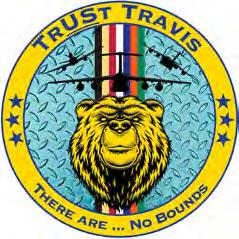

TRAVIS TAILWIND

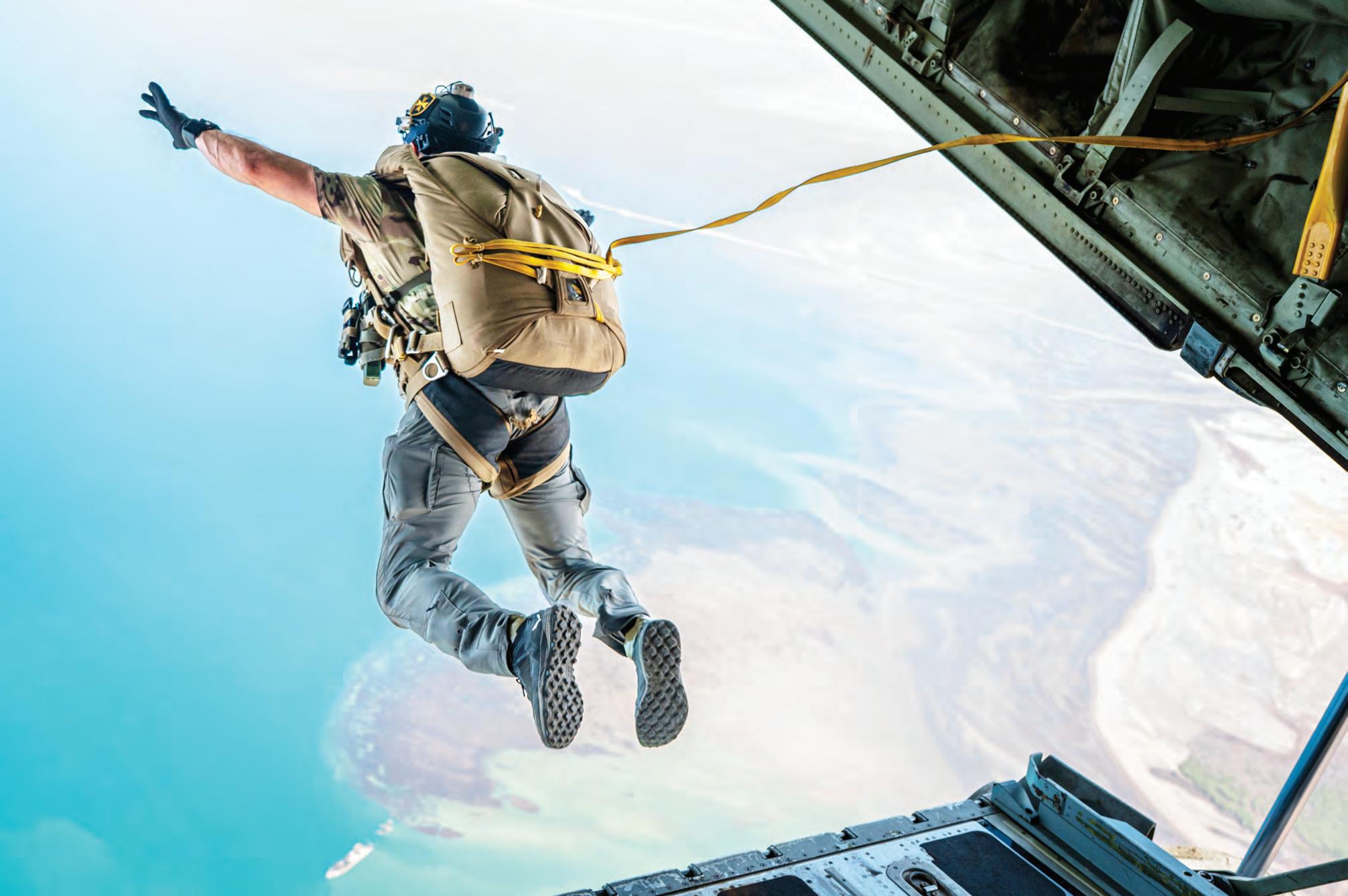
GIANT LEAP
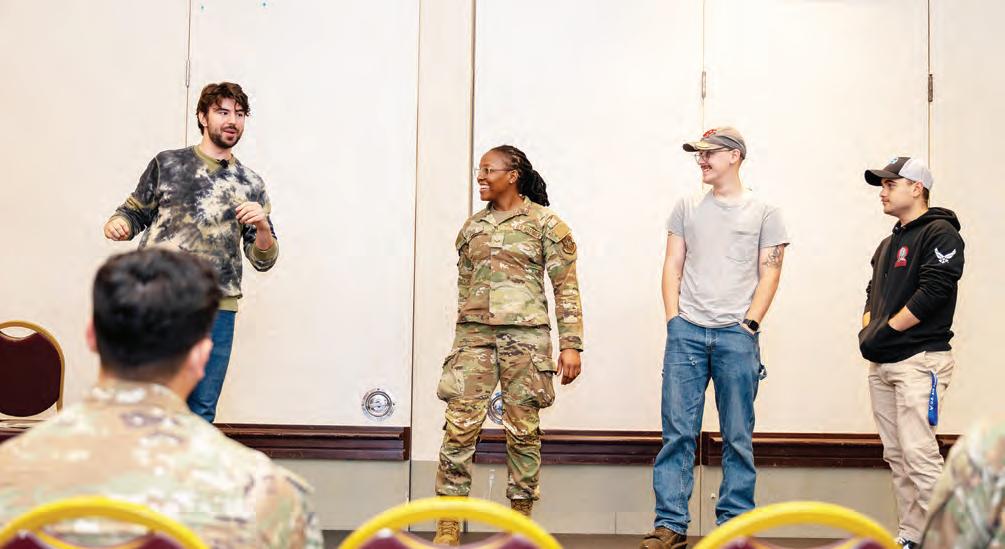
IPRO presents a sexual assault prevention event at Travis
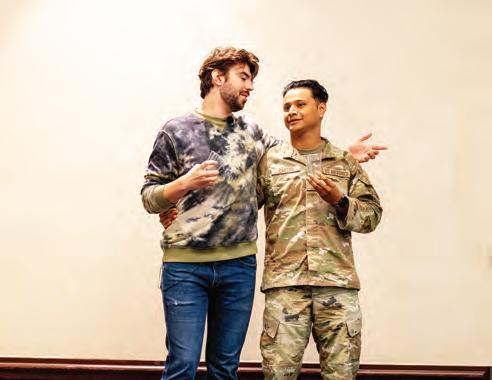

TUCSON, Ariz. — After nearly 84 years, the USS Arizona’s unknowns could be one step closer to being known again.
A civilian-led effort called Operation 85 has reached its goal of collecting enough DNA samples from the living relatives of the battleship’s crew to prompt the Defense Department to consider reexamining dozens of unidentified servicemen who were buried in Hawaii after the Pearl Harbor attack.
Most of the 1,177 sailors and marines killed on the USS Arizona on Dec. 7, 1941, were entombed inside the ship when it sank.
Arizona unknowns in Hawaii
Some of the unidentified remains of USS Arizona casualties are buried commingled in mass graves at National Memorial Cemetery of the Pacific in Honolulu. A civilian-led effort has reached its goal of collecting enough DNA samples from the living relatives of the battleship’s crew to prompt the Defense Department to consider reexamining dozens of the unidentified servicemen buried in Hawaii after the Pearl Harbor attack.
Only 105 bodies were recovered and identified. Those who could not be identified were buried as unknowns, some in mass graves.
Virginia real estate agent Kevin Kline launched USS Arizona Operation 85 in April of 2023 in honor of his great-uncle, Robert Kline, a gunner’s mate second class who died on the Arizona at the age of 22. The sole mission of the all-volunteer project: to identify as many of the unknowns as possible.
“To have ‘unknown’ on a grave when we have the technology to know – that just doesn’t sit right with me,” Kline said.
Robert Edwin Kline
Gunner’s
Staff
Airmen assigned to the 60th AMW clap during
sexual assault awareness event at Travis Air Force Base, Nov. 18.
Santa’s safe landings
Hello beautiful people.
It’s your Travis AFB
“Hype-man,” checking in, although maybe one belt notch looser than last month.
But as Mrs. Claus always reminds me, “Whoever heard of a skinny Santa?”
And speaking of the Big Red One, he’s the star of this month’s reflection. Have you ever stopped to wonder how Santa manages to land his sleigh – smoothly, safely, and on time on billions of rooftops around the world?
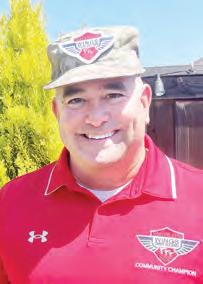
Flat roofs, steep roofs, icy chimneys, he handles them all like a pro. Sure, the reindeer are magical, but I think there’s more to it than that. Santa, my friends, has mastered one of the most important lessons every pilot learns: If you want a safe landing, you must learn the approach.
Every runway is unique. Each has its own angle, altitude, lighting, and terrain. Before a pilot even takes off, they study those details in mission planning, learning how to approach each airfield long before they touch the controls.
So why the flying tutorial? Because just like runways, people each have their own unique “approach.” If you want to have a successful “landing” with someone, whether it’s a coworker, a friend, a spouse, or a boss, you have to take the time to understand how to approach them.
Runways are like people. Think about it. Not every runway will welcome the same approach. Some have crosswinds. Some are short. Some are hidden in fog. The pilot doesn’t expect the runway to change, it’s the pilot’s job to adjust their flying.
The same goes for human relationships. If you’ve struggled to connect with certain people, maybe it’s time to tweak your approach. No runway ever changes its layout to match the pilot’s flying style. You control
your jet, your words, tone, timing and energy. If you want a smoother “landing” in a conversation or a relationship, you have to make the right adjustments. Your leadership “flight plan” might work perfectly with one person but fail with another. A motivational style that inspired your last boss may fall flat with your new one, not because you’ve lost your touch, but because you haven’t yet learned their approach.
Learning how to approach individuals takes time and intention. Get to know them personally; understand what matters most to them; recognize their communication preferences; and learn the best times to engage, and when to give them space.

And just like certain runways, some people will always be a little challenging to land with, especially the first few tries. But as any good pilot knows, the more successful landings you make, the easier the approach becomes. Relationships built on trust, respect and consistency turn turbulent approaches into smooth arrivals.
Now as we enter this season of giving, take a moment to reflect on your leadership flying style. Are you trying to use the same approach with every person and situation?
Maybe it’s time to make a few adjustments. The best leaders – like the best pilots – know how to adapt.
And just like Santa, if you want to deliver the goodness packed in your sleigh, you’ve got to land safely first.
As always my friends, until next time: Be intentional, Be the Goodness, and Happy Safe Landings to all.
John Evalle is a retired U.S. Air Force chief master sergeant, who works in theMilitary Affairs Office, Travis Credit Union. jevalle@ traviscu.org.
2nd Bomb Wing establishes certified calibration lab
A irm An 1st ClAss Devyn tAylor 2ND BOMB WING
BARKSDALE AIR
FORCE BASE, La. — Barksdale Air Force Base is on track to establish a certified calibration lab for Ludlum radiation meters, making it the only base in Air Force Global Strike Command with this capability and one of two across the Department of War.
Ludlum Measurements, based in Sweetwater, Texas, manufactures radiation detection and monitoring equipment used by the Department of Energy, the Air Force Radiation Assessment Team and national defense missions. These meters detect alpha, beta and gamma radiation. A certified calibration lab at Barksdale will allow faster, more precise health risk assessments, giving commanders the information they need to make informed decisions during nuclear incidents and health emergencies.
The initiative began

when U.S. Air Force Master Sgt. Brandon Thompson, 2nd Operational Medical Readiness Squadron bioenvironmental engineering flight chief, identified the need for more efficient calibration capability for radiation response exercises.
“When I came from the 711th Human Performance Wing, I was on the Air Force Radiation Assessment Team
as a certified calibrator,” Thompson said.
“Once I got in the shop and started participating in Immediate Response Force and Response Task Force exercises, I saw a potential to explore a scaled-down version of the calibration lab located in the U.S. Air Force School of Aerospace Medicine, at Wright-Patterson Air Force Base in Ohio.”
Barksdale has worked
closely with Wright-Patterson AFB to develop standard operating procedures and acquire specialized equipment. The School of Aerospace Medicine has guided Barksdale’s Bioenvironmental Engineering Flight through the certification process, helping the base focus resources on essential requirements.
TRAVIS TAILWIND

Serving Travis Air Force Base and the surrounding community 1250 Texas St., Fairfield, Calif. 94533 707-425-4646 | Fax 707-425-5924
Publishers: Foy S. McNaughton and T. Burt McNaughton Advertising Manager: T. Burt McNaughton
Editor: Todd R. Hansen
Layout : Aaron Rosenblatt

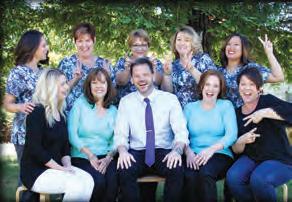





John Evalle Hype Man
Airman 1st Class Devyn Taylor/U.S. Air force file photos
Air Force 2nd Operational Medical Readiness Squadron bioenvironmental engineering technicians prepare to scan a simulated patient for radioactive contamination during a simulated nuclear response training at Barksdale
Air Force Base, La., Oct. 1. The bioenvironmental engineering flight identifies, evaluates and controls health and environmental hazards for the 2nd Bomb Wing by assessing risks from chemicals and radiation.
Airman 1st Class Raeven Anothony, 2nd Operational Medical Readiness Squadron bioenvironmental engineering technician, uses a walkie-talkie during a simulated nuclear response training at Barksdale Air Force Base, La., Oct. 1.
See Lab, Page 7
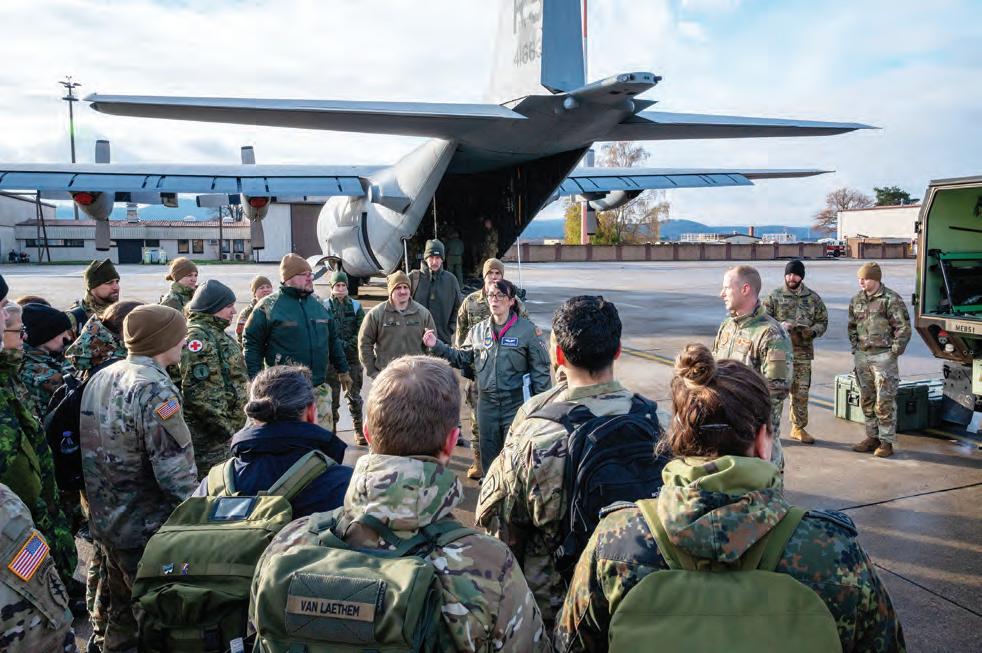
86th AES strengthens NATO medical readiness
Germany — Airmen from the 86th Aeromedical Evacuation Squadron configured a C-130H Hercules aircraft into a mission-ready aeromedical evacuation layout, Nov. 20, enabling a NATO medical evaluation course to conduct its culminating mock assessment.
The 86th AES, supported by a Critical Care Air Transport Team from Landstuhl Regional Medical Center and a field ambulance team from the U.S. Army’s 16th Sustainment Brigade, set the stage for the NATO Centre of Excellence for Military Medicine’s Medical Evaluation Course.
The MEDEVAL is a five-day course designed to develop certified medical evaluators who can assess alliance medical units using standardized criteria. Throughout the week, students study how to evaluate personnel, equipment, documentation and procedural readiness across different medical modules. The training culminates in a mock evaluation, giving participants the opportunity to put their new skills into practice in a realistic, mission-focused environment.
For this iteration’s mock evaluation, the 86th AES set up the entire training scenario. Preparation began the day prior, when crews worked to transform the aircraft into a fully operational AE platform, installing litters, securing stanchions and completing the configuration required for a simulated highcapacity medical evacuation mission.
“Yesterday, we had the entire squadron out here loading 30 mannequins and setting the aircraft up from forward to aft,” said Maj. Amanda Peterson, 86th AES assistant director of operations. “Really, this is what we do every day, so it didn’t take much prep beyond the setup and making sure the crew understood NATO’s objectives for the evaluation.”
Throughout the mock evaluation, 86th AES airmen walked students through their processes, explained patient movement procedures and answered questions about how they operate in a NATO environment.
The training provided an opportunity for the 86th AES crews to engage directly with medical personnel from across the alliance. As conversations developed, AES personnel gained insight into how partner nations perform similar missions, strengthening their understanding of NATO standards and the practical realities of multi-

national operations.
“By the end of the day, everyone was having conversations and sharing experiences,” Peterson said. “Those relationships make it easier to work together on an aircraft and help build the foundation we need for future missions.”
Beyond building relationships, working alongside NATO students also gave the 86th AES an opportunity to reinforce the interoperability required for multinational medical operations.
“The biggest challenges usually come down to language and terminology,” Peterson said. “But once we talk through those differences, it becomes a great opportunity to exchange knowledge and understand how our partners approach the same mission sets.”
The event offered valuable insight into how partner nations meet common medical requirements and how NATO evaluators assess those capabilities. The opportunity to compare processes and exchange knowledge
helped deepen the sense of collaboration across the alliance.
“It’s rewarding to be at a point where I learned this job and now get to teach it to our partners,” said Staff Sgt. Joshua Hunter, 86th AES flight instructor.
“Seeing how they work and sharing how we work helps all of us grow. We’re going to need each other down the line.”
The mock evaluation showcased the 86th AES’s ability to generate a realistic, high-fidelity training environment in support of NATO’s medical readiness efforts.
“Events like this not only help certify more evaluators, but also get everyone on the same page and align our expectations,” said Maj. Justin Stein, 86th Operations Group flight nurse evaluator. “Moving forward, we’re going to have to work together. We’ll need each other for whatever mission comes next.”
Through shared learning, hands-on collaboration and a commitment to interoperability, the 86th AES continues to rein-

A rmy & A ir Force
A FFAirS TRAVIS AFB — For Travis Air Force Base shoppers, it’s time to deck the paws for the Army & Air Force Exchange Service’s Holiday Pet Photo Contest with Nestle Purina for a chance to fetch their share of $3,000 in Exchange gift cards. From Dec. 1 through Dec. 31, authorized Travis Air Force Base Exchange shoppers 18 years or older can submit a festive photo of their pets at ShopMyExchange.com/ Sweepstakes for a chance to win a share of $3,000 in gift cards. Two grand-prize winners each will receive a $500 Exchange gift card. Eight runners-
up each will receive a $250 gift card. “The holidays are all about joy, and what better way to spread cheer than by showcasing our beloved pets in their festive best,” said Travis Air Force Base Exchange General Manager Cathie Byrns. No purchase is necessary to win. Winners will be contacted around Jan. 23. Department of War and Coast Guard civilians and honorably discharged veterans who have confirmed their eligibility to shop online may also enter. Veterans can visit https://aafes.media/ paveterans to learn more about their shopping benefit. DoW civilians can visit https://aafes. media/cacbenefitspa.













Senior Airman Brenden Beezley/U.S. Air Force file photos
force its critical role within the Alliance and its readiness to operate seamlessly alongside NATO partners whenever called upon.
Army Spc. Lucas Marzan, 16th Sustainment Brigade combat medic, explains the capabilities of a field litter ambulance to two NATO Medical Evaluation Course students during a mock evaluation at Ramstein Air Base, Germany, Nov. 20.
Airpower readiness bolstered during Arctic Gold
Senior A irm An
Colin PerkinS 354TH FIGHTER WING
EIELSON AIR FORCE
BASE, Alaska — The 354th Fighter Wing conducted readiness exercise Arctic Gold 26-1 at Eielson Air Force Base, Alaska, Nov. 17-19.
The exercise is designed to test the wing’s ability to quickly generate, deploy and sustain combat-ready airpower in a high-threat environment.
“A lot of work and planning was put into getting this exercise to run efficiently and effectively, taking into account all of the separate factors that affect the way things play out and what we can accomplish towards the mission,” said Air Force Master Sgt. Zachary Kugler, exercise program director. “We use key takeaways and lessons learned to shape the way we generate airpower in the future and how we can apply it to both exercises and realworld scenarios.”

During the exercise, the 354th Operations Group tested its mission capa-
bilities and readiness by deploying F-35A Lightning IIs from both the 355th Fighter Squadron and the
356th Fighter Squadron, supported by F-16 Fighting Falcons from the 18th Fighter Intercep-
tor Squadron.
“The 354th OG is charged with providing combatant commanders
with combat-ready forces in order to meet mission objectives and priorities,” said Air Force Lt.
Col. Lloyd Wright, 354th OG deputy commander.
“This [is] accomplished by organizing, training and equipping our component squadrons who project power in the Pacific area of responsibility and maintain the [Air Force’s] northernmost strategic runway.”
Airmen carried the weight of the hands-on mission execution, building pallets, moving people and cargo, operating vehicles in extreme conditions and sustaining the pace required to generate combat power.
“Operating in the Arctic forces you to think differently, and our airmen proved that they not only understand the constraints but thrive in them,” said Air Force Lt. Col. Peter Daigle, 354th Logistics Readiness Squadron commander. “We rehearsed cold-weather processes, validated our deployment readiness, and stress tested the systems that enable fighter generation in one of the harshest climates on Earth.”
See Gold, Page 7






























“The People of The United Methodist Church™”
Airman 1st Class Mary Murray/U.S. Air Force file
An F-16 Fighting Falcon assigned to the 18th Fighter Interceptor Squadron taxis before taking off during Exercise Arctic Gold 26-1 at Eielson Air Force Base, Alaska, Nov. 18.
The Home Depot, Travis Exchange build holiday cheer with free Kids Workshop
a rmy & a ir Force exchange service
PuBlic a FFairs
TRAVIS AFB — Military children are invited to don an orange apron and unleash holiday magic as the Travis Exchange teams up with The Home Depot on Dec. 6 to host a free Kids Workshop complete with an ornament kit.
Kids will receive a gingerbread man ornament kit with materials and instructions for putting it together. Children will take home the ornament and a Kids Workshop apron while supplies last.
“The Travis Exchange is excited to be a part of building memories for the military community,” said Travis Exchange General Manager Cathie Byrns. “We can’t wait to see the festive ideas that these creative military children come up with.”
All active-duty service members, dependents, retirees, Department of War civilians and retirees, and honorably discharged veterans who have confirmed eligibility can shop through The Home Depot’s branded page at ShopMy Exchange.com.
The Home Depot Kids Workshop is from 9 a.m. to noon on Dec. 6 while supplies last, and no registration is necessary. For more information, military shoppers can contact
Since May 2023, The & Air Force Exchange Service to offer major appliances tax-free to military shoppers in CONUS; Oahu, Hawaii; and Puerto Rico. This year, the assortment expanded to include nearly every home improvement product available including power tool sets, outdoor power equipment, grills, garden tools, ceiling fans and more.
Bryanna richards AIR EDUCATION AND TRAINING COMMAND PUBLIC AFFAIRS
DECIMOMANNU AIR BASE, Italy — The U.S. Air Force and the Italian air force have partnered to execute an undergraduate flying training program Small Group Tryout at the International Flight Training School, Decimomannu Air Base, Italy.
Ten U.S. students who first attended civilian flight school-led Initial Pilot Training are now enrolled at the International Flight Training School to complete a 133-day Basic Jet Training course in the T-346A Master Jet Trainer. Upon graduation, they will earn their U.S. Air Force pilot wings.
“This initiative is expected to provide valuable data for optimizing pilot training methods as we prepare to ramp up the T-7A,” said Col. Corey Hogue, Capability
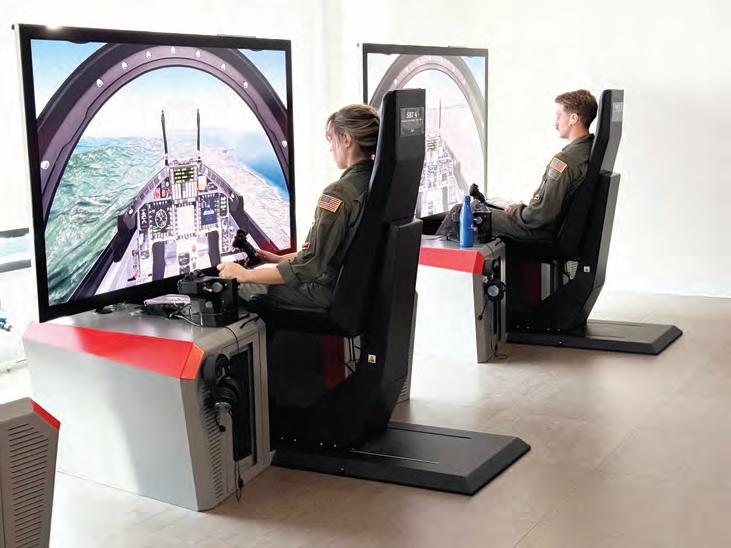
and International Affairs.
“After receiving some data and seeing how well the students are performing, I’m pretty excited.”
After completion of
civilian-instruction IPT
to fast-jet training using a single military trainer.
The exchange provides an opportunity to assess the future of the service’s

From Page 1
most of the 1,177 sailors and Marines who died on the battleship that day, his remains were never recovered and identified.
Under Defense Department policy, DNA samples must be collected from the relatives of at least 60% of the ship’s unrecovered crew before the Defense POW/MIA Accounting Agency will consider disinterring remains for possible identification.
Kline and company officially hit that mark last month, when the number of Arizona crewmen represented by so-called “family reference samples” surpassed 643.
As of Nov. 14, that total stood at 661, thanks almost entirely to Operation 85’s campaign to track down nearly 1,400 descendants of the Arizona crew and talk them into submitting their DNA to the Armed Forces Medical Examiner System.
Among those convinced to participate was the nephew of 17-year-old James Van Horn, who died on the USS Arizona.
More than 85
“We have had overwhelming interest. Of the 1,395 surviving family members we’ve connected with, only 12 said they had no interest in participating and providing a DNA sample,” Kline said.
Four others died before their sample kits could be returned, and about 125 descendants had to be turned away, either because they were too distantly related to be used for identification or their link to the crewmember could not be confirmed by Operation 85’s genealogist.
The group adopted the number 85 as part of its name because that’s how many unidentified Arizona crew members were thought to be buried at the National Memorial Cemetery of the Pacific, which overlooks Honolulu from the volcanic heart of
Punchbowl Crater.
Since then, Kline said, he has learned the true number could be well over 100, and that some of the men might not have been buried with their fellow Arizona crew members.
There is also a chance that the graves dedicated to the USS Arizona contain the remains of men from other ships as well, he said. “Who knows, we could find another sailor from the Oklahoma or somewhere else.”
Pearl Harbor anniversary
The battleship USS Arizona belches smoke as it topples over during the Dec. 7, 1941, Japanese surprise attack on Pearl Harbor, Hawaii.
The effort is focused solely on the graves of the unknowns at the Punchbowl. The sunken battleship itself is considered a national shrine and will not be disturbed.
Now that Operation 85 has surpassed the 643-man threshold, Kline said the next step is to schedule a meeting with top-ranking Navy officials to lobby for the identification process to begin.
“We were going to do it in October, but October came and went. Now we’re hoping for (a meeting in) November,” he said.
It’s unclear when – or if – the Defense POW/MIA Accounting Agency might act on Operation 85’s achievement.
Kline’s team isn’t waiting around to see what happens next. They are still actively seeking out more surviving descendants of the Arizona crew so they can add to the number of DNA samples on file.
“The goal is to identify everybody,” Kline said.
Back on board
Already, the group has dramatically exceeded expectations, accomplishing in less than three years a task that Defense officials predicted would take paid military staff members as much as a decade.
A 2022 report by the Department of the Navy
estimated it would cost roughly $2.7 million just to locate, contact and collect DNA samples from surviving relatives of the ship’s crew. The document concluded that identifying the Arizona unknowns was feasible but would “require significant resources and an inordinate amount of time.”
Basically, Kline said, the Navy spent $83,000 to write a report detailing why the work couldn’t easily be done, then Operation 85 went out and did it for around $70,000.
Whatever the grassroots effort may have lacked in funding, it more than made up for through the sheer determination of its volunteer staff, which has grown to include a forensic genealogist, two research analysts and the everavailable Kline himself.
“I’ve picked up the phone on Christmas. I’ve picked up the phone while in line at Hersheypark (amusement park), waiting to ride a rollercoaster with my kids,” he said.
Along the way, Operation 85 has worked with the Navy to streamline its process for accepting genetic samples from the relatives of missing service members, Kline said. The Marine Corps already had a user-friendly process in place, so all it took to get the Navy on board was “basically me saying good things about the Marines over and over again,” he explained with a laugh.
Kline and his team have also helped track down the personnel files and dental records for hundreds of Arizona crew members to aid with the process of identifying any remains that might eventually be exhumed.
As word has gotten around about the success of the project, Kline said family members of the missing from other conflicts have contacted him to ask, “How are you doing this? How are you breaking through?”
The effort got a huge head start early on, thanks to Tucson journalist Bobbie Jo Buel. The former Arizona Daily Star editor spent more than five
years of her own researching the crew by scouring newspaper archives and public records and collecting snapshots and personal letters from relatives of the men.
The profiles that Buel compiled for every sailor and Marine who died on the battleship are now housed on the Operation 85 website, and her notes proved instrumental as the team set out to find the crew’s blood relatives.
Van Horn memorial The medallion for
James Randolph Van Horn, on the USS Arizona Mall Memorial at the University of Arizona, honors the 17-year-old who was the only Tucsonan killed aboard the battleship during the Japanese attack on Pearl Harbor in 1941.
Robert Edwin Kline already has a memorial headstone at Arlington National Cemetery in Virginia – placed there at the request of surviving family members about 20 years ago, in the absence of a marked grave anywhere else.
If the gunner’s mate is


training scenarios. This initiative, combined with coordination with Formal Training Units, is designed to increase the throughput of pilots advancing to their operational platforms while enhancing the overall quality and readiness of airmen entering the force.
The program will conclude in June 2026, providing AETC with valuable lessons to refine the pilot training pipeline and fully leverage the capabilities of the T-7A.
The first T-7A aircraft is set to arrive at Joint Base San Antonio-Randolph in early December.
one of the unknowns who ends up being identified as a result of Operation 85, his great-nephew said his family has already chosen a final resting place for the young man’s remains. They want him to be entombed alongside his shipmates inside the sunken Arizona.
“He joined the Navy at 17 and died at 22,” Kline said. “The majority of his adult life was spent on that ship. Let him go back there.”





















Courtesy photo
Air Force student pilots conduct T-346A Master Jet Trainer simulation training during the undergraduate flying training program Small Group Tryout at the International Flight Training School at Decimomannu Air Base, Italy.














Once certified, the lab will allow Barksdale to conduct calibrations within 24 hours, instead of sending the meters to the Ludlum manufacturer and waiting weeks for the calibrations to be sent back. This would also enable Barksdale to acquire meters from other AFGSC bases and reduce reliance on external labs.
“That rapid turnaround will only be possible if airmen are fully trained on the equipment,” said 1st. Lt. Krystal Torres Diaz, 2nd Medical Group executive officer. “Training ensures our airmen are ready to step in the moment certification is complete. Doing sets and reps ensures confidence and repeatability in calibrations. It’s about making sure the capability is not only available, but also effective.”
The Bioenvironmental Engineering Flight’s leadership team will host a capstone evaluation for their airmen. The capstone is designed to prepare airmen to confidently operate Ludlum meters, resolve issues in the field and deliver accurate information to commanders.
“Having the opportunity to train on radiation equipment that emergency responders around the world use is truly a unique experience,” said airman 1st Class Raeven Anthony, 2nd OMRS bioenvironmental engineering technician. “This gives us the edge that no other bioenvironmental engineering flight in the DoW has.”
The Bioenvironmental Engineering Flight will use this certification to strengthen the 2nd Bomb Wing’s IRF and RTF missions, delivering faster, more reliable information to commanders, airmen and interagency partners tasked with safeguarding the nation.


Gold
From Page 4
Daigle also highlighted the airmen’s ability to utilize technical skills and versatility, and to make sound decisions even outside their normal jobs, providing the tactical edge necessary in order to accomplish the mission.
“Every exercise gives us data, but Arctic Gold
gave us clarity; our priorities are centered on sharpening the logistics foundations of our wing that makes us a combatcredible force, ensuring our squadron commanders continue to develop leaders who can think critically, operate independently and take initiative,” Daigle said. “The future fight will reward agility, creativity and technical mastery – and that starts with how we train.”

317th AW hosts C-130 Weapon System Council
M aster sgt. Dana J. Cable
DYESS AIR FORCE
BASE, Texas — The 317th Airlift Wing hosted the Fall 2025 C-130 Weapon System Council (WSC), Oct. 8, uniting leaders and experts from 26 wings and staff agencies across the Total Force tactical airlift enterprise to advance warfighting capabilities and Rapid Global Mobility.
“The C-130 Weapon System Council allows for the rapid acceleration, validation, and implementation of new tactics and procedures to ensure we maintain a warfighting advantage over our adversaries,” said Col. Justin Diehl, 317th AW commander and WSC chair.
The 317th AW hosted a series of mission briefings and discussions centered on high-end readiness. The day began with a debrief of the 2025 Department-Level Exercise, where Dyess and partner wings shared lessons learned and recommendations for distributed command and control and refining command relationships across the Indo- Pacific region.
Follow-on presentations examined future operational concepts and modernization needs.
The 317th AW’s Exercise BALIKATAN lead planners briefed the progression of acceler-

ated mission sets, Joint schemes of maneuver, and projected goals for next year’s iteration with the Marines and Army in the Philippines.
Additional sessions reviewed updates to C-130J Unit Type Codes, resource alignment for distributed operations, and optimization of Ready Aircrew Program training requirements to better reflect combat realities.
Maintenance leaders from Little Rock AFB, Arkansas, also shared findings from a fleet-health analysis focused on preserving long-term aircraft reliability through refined scheduling and utilization rates.
The 317th AW marked the occasion with an eight-ship C-130J launch from Dyess that demonstrated the wing’s ability to rapidly generate aircraft and execute large-scale, coordinated airlift operations while simultaneously leading enterprise-level strategic discussions.
“Through the C-130 Weapon System Council, we’re bringing together leaders to strengthen collaboration, ensuring the C-130 community is ready for any mission and seamlessly integrated with our Joint partners,” said Chief Master Sgt. Marty Castillo, 317th AW command chief.
The C-130 Weapon
System Council provides a deliberate forum to coordinate modernization, tactics, and resourcing initiatives across activeduty, guard, and reserve components. By maintaining this continuous dialogue, the community ensures alignment with Air Mobility Command’s priorities and the National Defense Strategy.
“America’s tactical airlift and C-130 force is strong,” Diehl said. “The tight coordination within this group will ensure we continue developing new and innovative tactics; while ensuring we provide a solid foundation for training our newest aircrew members and maintainers.














MASONRY
Senior Airman Emma Anderson/U.S. Air Force file photos
A C-130J Super Hercules aircraft takes off from Dyess Air Force Base, Texas, Oct. 8. The 317th Airlift Wing launched eight aircraft as part of the Fall 2025 C-130 Weapon
System Council, highlighting the wing’s ability to rapidly generate aircraft and execute large-scale, coordinated airlift operations while leading strategic discussions.
Eight C-130J Super Hercules aircraft taxi on the runway at Dyess AFB, Texas, Oct. 8.
Airman 1st Class Devyn Taylor/U.S. Air Force file
Senior Airman Ethan Newman, 2nd Operational Medical Readiness Squadron bioenvironmental engineering technician, reads a checklist before leading a simulated nuclear response training at Barksdale AFB, La., Oct. 1.
Senior Airman Nicholas Paczkowski/U.S. Air Force file
An F-35A Lightning II assigned to the 356th Fighter Squadron takes off during Arctic Gold 26-1 at Eielson Air Force Base, Alaska, Nov. 18.







